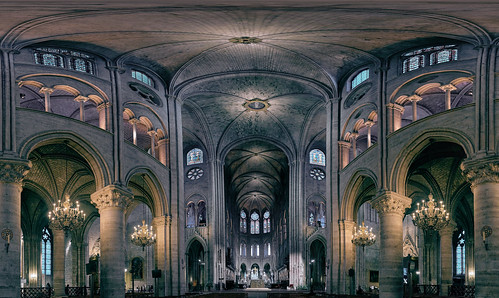
 )
)My day job (which, like many, doesn’t always stay put in the day time) is all COVID-19 all the time these days, so I hope you can understand why I’m looking for anything else to talk about in the world of science. Plus I trust that you folks are the sort to keep up on what you need to know via official channels. So, let’s talk about this video about the Notre Dame cathedral instead. It highlights the role that scientists are playing, both in the post-fire restoration and in exploring what can be learned about the storied structure’s history from damaged materials that no longer serve their original purpose. (If you prefer, a text story with more details can be found here.)
Nearly a year on from the fire, it is heartening to see restoration being pursued in earnest. I’ve idly wondered in the past how visual inspections can provide information on the integrity of a structure, especially those not made of wood or iron. Rust and rot are obvious, but I didn’t know about the visual cues that limestone can provide about what it has endured and what changes it has undergone. I thought that was pretty cool. I also appreciated the refresher on the physics of cathedral architecture. I was reminded that buildings are inherently falling down and good construction takes advantage of that to keep them upright, which I find strangely comforting.
I’m also fascinated by the scale of the original construction efforts, as further revealed by new research on the materials. The idea of cultivating a forest for over a century to provide wood for a building you would personally never live to see is almost unfathomable in a world where skyscrapers get erected in New York City between visits home to northern Jersey. Conversely, I know the intergenerational conflict thing is probably overblown, but even just with the perception that Baby Boomers can’t get along with Millenials less than 40 years their junior (and vice versa), how do you imagine people laboring on a project for great-great-grandchildren they’d never meet. Makes me think about what we are building for our great-great-grandchildren. And what are we making possible for them to build?
And speaking of overblown conflicts–look! It’s scientists, helping to restore a significant religious landmark! And believers, accepting the expertise of scientists to find material solutions to material problems! Oh, I’m sure there are some who would prefer to see science applied to more secular pursuits. And I suppose it is a valid question to wonder about the substantial investment of resources in a building. One thing that comes to mind is the value of inspiring people to collaborate. There’s the Watchmen solution of a common enemy to rally against, but that can only last so long. Seems better to rally people around something constructive. That doesn’t mean it has to be a cathedral or even a building, just something that needs many of us to contribute. What would you like to see us build together?
Andy has worn many hats in his life. He knows this is a dreadfully clichéd notion, but since it is also literally true he uses it anyway. Among his current metaphorical hats: husband of one wife, father of two teenagers, reader of science fiction and science fact, enthusiast of contemporary symphonic music, and chief science officer. Previous metaphorical hats include: comp bio postdoc, molecular biology grad student, InterVarsity chapter president (that one came with a literal hat), music store clerk, house painter, and mosquito trapper. Among his more unique literal hats: British bobby, captain’s hats (of varying levels of authenticity) of several specific vessels, a deerstalker from 221B Baker St, and a railroad engineer’s cap. His monthly Science in Review is drawn from his weekly Science Corner posts — Wednesdays, 8am (Eastern) on the Emerging Scholars Network Blog. His book Faith across the Multiverse is available from Hendrickson.

Leave a Reply